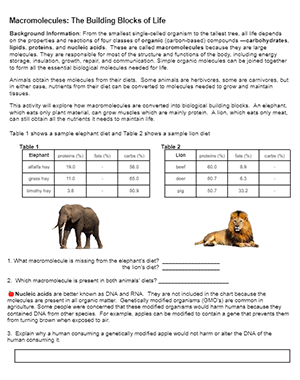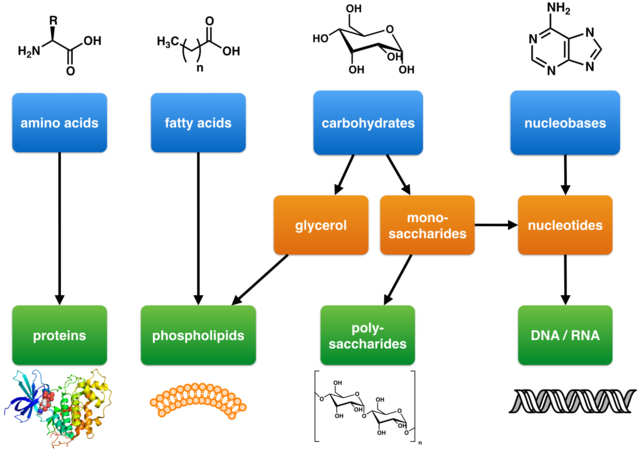Macromolecules are large molecules composed of thousands of covalently bonded atoms. They play essential roles in various physiological processes and are found in all living organisms. Macromolecules are composed of smaller units called monomers, which are linked together through covalent bonds to form polymers
The four macromolecules are proteins, lipids, carbohydrates, and nucleic acids.
This activity explores how lions and elephants use macromolecules to grow and maintain homeostasis.

Student Activity on Macromolecules
In the first part, students examine the protein, fat, and carbohydrate compositions of the animals’ diets. Since the elephant is a herbivore, it does not obtain fats from its diet. The lion, being a carnivore, does not obtain carbs from its diet.
Students further explore how each macromolecule is made from repeating subunits. These molecules are broken down by hydrolysis and then shuffled and rebuilt with dehydration synthesis.

In the second part of the activity, students look at energy released when bonds are broken. They focus on the diet of a lion where they use a model to demonstrate how proteins are broken into amino acids, which are then combined to make proteins needed for fur, collagen, and muscle.
Finally, they compare the amount of energy obtained from a lion’s diet and that obtained from an elephant’s diet. They must identify which diet is most efficient for gaining nutrients needed for life, by comparing the relative kilocalories released from breaking macromolecule bonds.
This activity is intended for AP Biology or advanced biology classes. These Google Slides provide content background for understanding biological molecules and reactions. If students need more help or reinforcement, check out this game called Boxing Biomolecules. For a hands-on experience with biomolecules, check out the McMush Lab.

